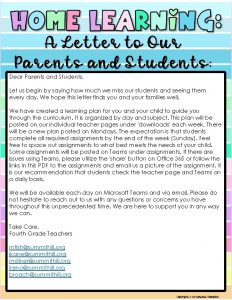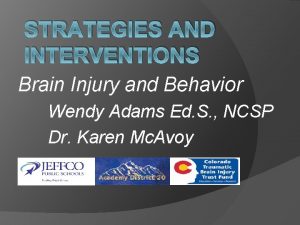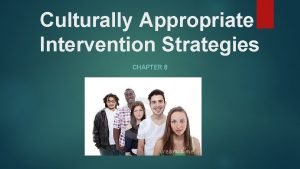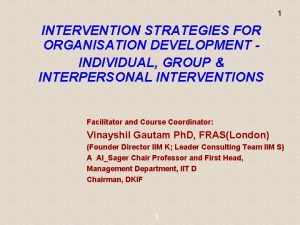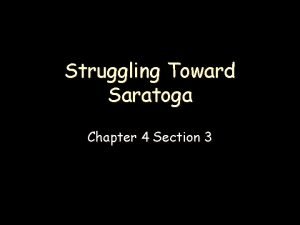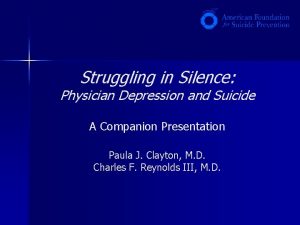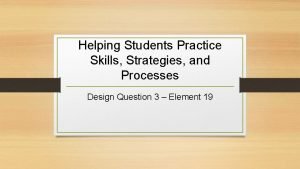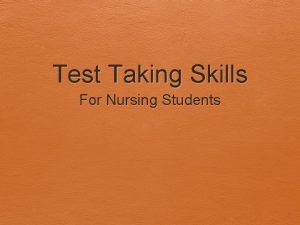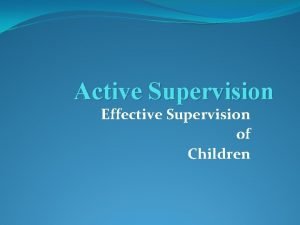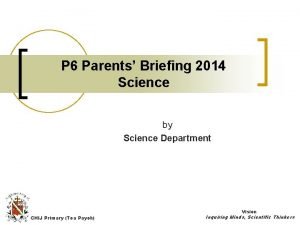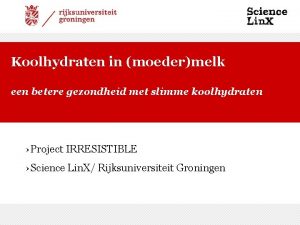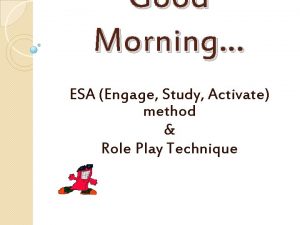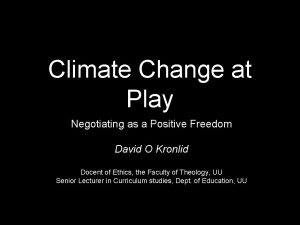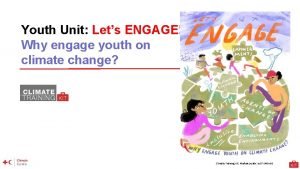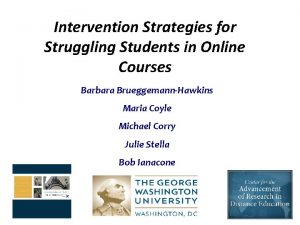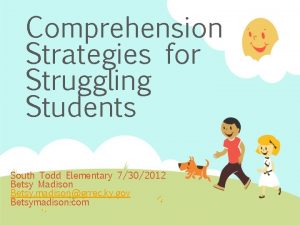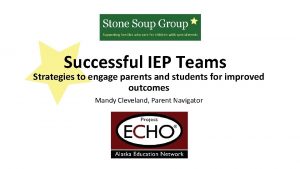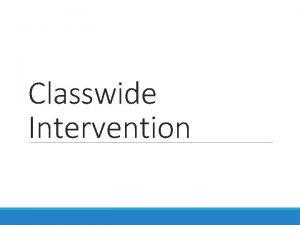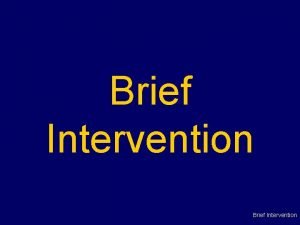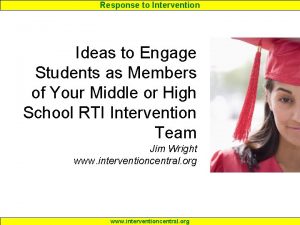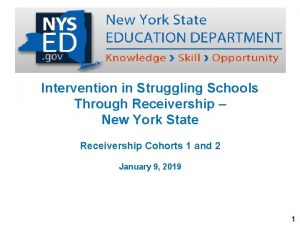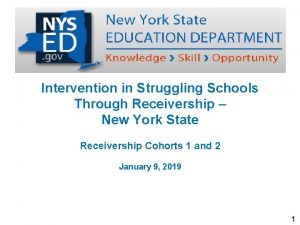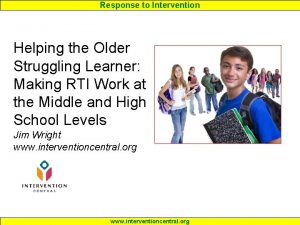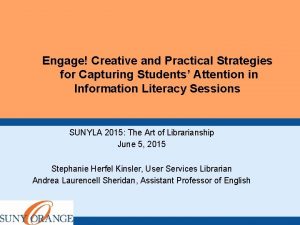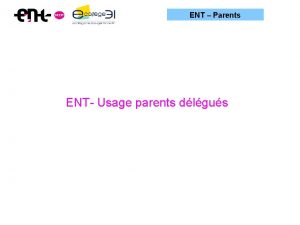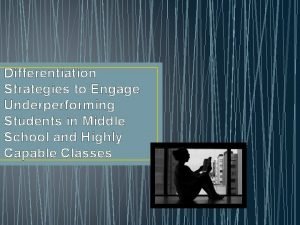Intervention Strategies to Engage Students and Parents Struggling






































- Slides: 38

Intervention Strategies to Engage Students and Parents Struggling with School Anxiety School Refusal Jackie Rhew MA, CADC, LCPC School Anxiety / School Refusal Program Alexian Brothers Behavioral Health Hospital

Identifying a Student at Risk Absences from school • Excessive excused and unexcused absences • Increase in truancies • Avoids portion of school day (e. g. gym class, particular teacher{s} or period{s} of school) Increase in somatic symptoms • Exhibits stomach aches, headaches, nausea, vomiting, etc. especially on school days • Frequent visits to doctors or specialized medical attention • escalater clip 2

Identifying a Student at Risk (cont’d) Change in grades or academic achievements • Avoids or struggles to complete academic tasks • Missing assignments or incomplete assignments • Pattern of academic failure • Decreased motivation associated with increased negative feelings towards school • Easily overwhelmed with school and home expectations and/or assignments 3

Identifying a Student at Risk (cont’d) Marked change in attitudes or behaviors • • • Distressed about school more often than peers their age Feelings and attitudes towards school have negatively changed Behavior patterns only occur on school days Pattern of negative peer relationships Avoidance of school-related activities Difficulties with social skills and peer relationships 4

Factors that Contribute to School Refusal • Difficulties with… • Managing feelings of discomfort • Experiencing disappointment • Applying conflict resolution skills • Communicating needs effectively to parents, peers, and/or school staff 5

Emotional and Cognitive Development • Assessing discrepancy between emotional and cognitive levels of development • Understanding different stages of emotional development • Considering emotional development when formulating expectations • Fostering emotional maturity 6

7

What is Anxiety? • Normal, natural, built in through evolutionary processes • Response to the perception of future threat or danger • We need this to prepare for future potential difficulties • Some anxiety is actually good for performance 8

When we are Uncomfortable or Anxious • Our Fight – or – Flight system gets activated by the perception of threat/danger • The perceived fear is greater than the actual threat/danger • Everyday occurrences become overwhelming • Behaviors interfere with daily functioning 9

10

Maladaptive Coping (Avoidance) • Based on misappraisal of the threat • Intention is to avoid fear stimulus or the danger it signals • Coping patterns develop as a way to create immediate relief and avoid experience of discomfort 11

Distress Tolerance • Lack of crisis survival strategies • Underdeveloped skills to manage feelings such as disappointment, anger, and sadness • Difficulty applying coping strategies to stressors 12

Emotional Regulation • Difficulty managing emotions • Lack of self soothing techniques • Poor impulse control modern family clip 13

Functions of School Refusal Behavior (Kearney)-4 Domains Domain 1: • Avoidance of Negative Affect (somatic complaints, sadness, general anxiety) Domain 2: • Escape from Evaluative or Social Situations (social phobia, OCD perfectionism) Domain 3: • Attention Seeking Behavior (separation anxiety, sympathy from family, high enmeshment) Domain 4: • Pursuit of Tangible Reinforcers (video games, internet, sleep, drug use) 14

Communicating to Supports Anxiety Rating Physical Symptoms Thoughts Coping Skills 10 9 8 7 6 5 4 3 2 1 15

Strategies and Interventions Absence Policy • Clear and enforceable attendance policies will help motivate students • Count all absences rather than differentiating between excused and unexcused • Require a physician note for all absences Communication • Maintain consistent dialogue between school personnel and parents on student’s progress and expectations (i. e. weekly contact with parent) • Creating rapport between student and staff helps the student to experience a connection with the school 16

Strategies and Interventions (cont’d) • School Wide Interventions • Peer helpers/call or contact from peer when absent from school • Incentive program (gift card, etc) • Automatic or personal phone call to student in the morning • Encourage positive praise for accomplishments • Establish connections with school staff/teachers • Identify patterns of utilizing supports (limitation on time spent in social worker and/or nurse office ) 17

Strategies and Interventions (cont’d) • Screening in Middle School • Provide accommodations in a supportive school environment • Set clear expectations and follow through • Academic failure may indicate the need for o Psychological/neuro-cognitive assessment o Emotional, behavioral, or academic accommodations 18

Strategies and Interventions (cont’d) • Classroom Assistance/Teacher Interventions • Have preplan strategies with student that identify coping skills and supports that can be utilized in class • Periodic check in with students during class • Organization of materials (color code notebooks, folders, etc) • Prevent feelings of being overwhelmed • breaking assignments down • Photocopy pages of novel instead giving entire reading assignment/book • Simplify and differentiate content being taught • Highlight important due dates on syllabus/calendar – visual cues 19

Strategies and Interventions (cont’d) • Location of student’s desk, proximity helpful • Establish a “safe zone” in the classroom • Daily Routines • Write class objectives and classroom schedule on board • Set time limits • Utilize peers in groups to help student to increase connection in classroom • Discuss with student what are they doing tonight • Plan for transitions 20

Strategies and Interventions (cont’d) • Classroom and Student Interventions § Write out what is making anxious/upset and have a brief response to student § 2 minute break(s) § Use skills that increase self soothing § Stress Ball § Mindfulness and grounding techniques § Square or triangle breathing techniques § Journal or drawing for limited amount of time (example 2 minute) § Writing down the facts § Hierarchy or Anxiety thermometer 21

Strategies and Interventions (cont’d) Social • Encouragement of extracurricular activities and student participation can decrease anxiety, foster independence and increase connections in the school setting • Address negative peer relationships in the school environment, such as bullying, teasing, etc. • Social skill development may be necessary to promote change • School social workers, counselors, psychologists, teachers and peer groups are resources for intervention 22

Family Engagement Strategies • Develop connections by establishing rapport with parents or guardians to form relationships and define mutual goals • Help parents identify obstacles and goals (Hierarchy) • It is important to initiate and maintain communication between school personnel and parents on the student’s progress and expectations. Sending a written weekly report home to parents provides consistent dialogue between home and school of the student’s progress. • Provide resources for family (community resource packet with therapist, adolescent groups, community mental health center, etc. ) • List of how to respond when child is struggling (i. e. less talking, clearly defined expectations, etc) • school anxiety video 23

Comfort and Growth Zones 24

Building Resilience “Bounce Back!” is an acronym for some of the foundational principles of resilience, specifically: B – Bad times don’t last, and things get better. O – Other people can only help if you share with them. U – Unhelpful thinking only makes you feel worse. N – Nobody is perfect – not you, not your friends, not your family, not anybody! C – Concentrate on the good things in life, no matter how small. E – Everybody suffers, everybody feels pain and experiences setbacks; they are a normal part of life. B – Blame fairly – negative events are often a combination of things you did, things others did, and plain bad luck. A – Accept what you can’t change and try to change what you can. C – Catastrophizing makes things worse – don’t fall prey to believing in the worst interpretation. K – Keep things in perspective. Even the worst moment is but one moment in life. https: //positivepsychologyprogram. com/resilience-activities-worksheets/#youth 25

Family Therapy Overview • Family Systems Perspective • Purposeful parenting vs. emotional reactive parenting • Goals for parenting that are aligned with family values • Healthy and unhealthy patterns of communication • Language development 26

Family Therapy Interventions • Create realistic family contract • Identify patterns of behavior • Identify and strategize obstacles to following family contract • Evaluate progress and obstacles regularly • Aligned parenting creates expectations that increase consistency and structure 27

Strategies and Interventions (cont’d) • BE AWARE and manage frustration and emotional reactions to parents and students involved in truancy situations • BE AWARE of mental illness and emotional functioning of students and family members when creating interventions 28

Sample Family Contract Expectations Privileges 1. Attend School 2 hours of screen time 2. Be ready at 7: 00 Go out on Friday night 3. Chores Allowance 4. Homework Cell phone privilege 5. Extracurricular Video games, lab top Activities 29

Strategies for Parents • Increase self awareness • Avoid enabling your child • Create home environment that fosters structure and consistency • Communicate effectively • Recognize patterns that contribute to child’s anxiety 30

Verbal Communication • Provide child with choices • Language such as “It is your choice” vs. “You have to” • “What do you think you could do” vs. “you’ll be ok” • Look for teaching opportunities that work towards goal attainment • Use language that is purposeful • Less is more 31

Therapeutic Treatments for School Refusal • Cognitive Behavioral Therapy and Exposure/Response Prevention • Skill building: Communication, Conflict Resolution, Study/organization, Self esteem and Social Skills • Intensive individual therapy, family therapy and parent education • Collaboration with school support staff 32

Exposure and Response Prevention Treatment for School Anxiety • Make a list of feared stimuli/situations • Arrange stimuli in hierarchical fashion • Use the hierarchy to develop and implement plan of systematic exposure to stimuli/situations that trigger anxiety • Goal: to experience the fear and correct faulty beliefs to create adaptive patterns of anxiety • The exposure is assisted by therapist and is never forced on the patient 33

Exposure and Response Prevention Treatment for School Anxiety • Therapeutic anxiety prevention relies on the experience of short term discomfort and interrupting patterns of avoidance • The maladaptive anxiety is corrected by the awareness gained during the exposure (i. e. there are no long term negative effects by the experience) 34

Suggestions for Providers • Build rapport and trust with family members • Empathy • Teach skills and tools that may be useful • Avoid judgments and channel frustrations • Provide resources 35

Suggestions for Providers (cont’d) • Work with parents to set realistic expectations • Understand resources and limitations when forming expectations • Meet parents where they are • Provide support where needed 36

Suggestions for Providers (cont’d) • Work with parents to set goals for their child based on family values • Goals should be both long and short term • Goals should be specific, measurable, achievable, realistic and timely (SMART) • The expectations should be clear and consistent • Avoid power struggles 37

Contact Jackie Rhew MA, CADC, LCPC Clinical Liaison for Adolescent Services 847. 303. 4980 Jackie. Rhew@amitahealth. org 38
 3b using questioning and discussion techniques
3b using questioning and discussion techniques Dear students and parents
Dear students and parents Mes grands-parents mes parents et moi
Mes grands-parents mes parents et moi Parents parents
Parents parents Fiche histoire des arts frida kahlo
Fiche histoire des arts frida kahlo Tbi intervention strategies
Tbi intervention strategies Types of od intervention
Types of od intervention Culturally appropriate intervention strategies
Culturally appropriate intervention strategies Group intervention strategies
Group intervention strategies Chapter 4 section 3 struggling toward saratoga
Chapter 4 section 3 struggling toward saratoga Struggling in silence
Struggling in silence Remediation of the struggling medical learner
Remediation of the struggling medical learner Chapter 4 section 3 struggling toward saratoga
Chapter 4 section 3 struggling toward saratoga The outsiders adapted for struggling readers
The outsiders adapted for struggling readers Helping students practice skills, strategies, and processes
Helping students practice skills, strategies, and processes Reading strategies for parents
Reading strategies for parents Math strategies for parents to use at home
Math strategies for parents to use at home Champion of filipino students
Champion of filipino students Test taking strategies for nursing students
Test taking strategies for nursing students Counseling strategies for gifted students
Counseling strategies for gifted students Engagement strategies for students
Engagement strategies for students Engage and redirect in active supervision means, what?
Engage and redirect in active supervision means, what? Engage explore explain elaborate evaluate
Engage explore explain elaborate evaluate Engage explore explain elaborate evaluate
Engage explore explain elaborate evaluate Engage
Engage High potential employees criteria
High potential employees criteria Esa engage study activate method
Esa engage study activate method Engage in excavation
Engage in excavation My wiggly amps
My wiggly amps Cli engage
Cli engage Listening
Listening What is kindergarten curriculum night
What is kindergarten curriculum night Psu harrisburg engage
Psu harrisburg engage Engage calgary
Engage calgary Bisj engage
Bisj engage Learn empower evolve
Learn empower evolve Ilinx engage
Ilinx engage Lets engage
Lets engage Dashboard crystal reports
Dashboard crystal reports

